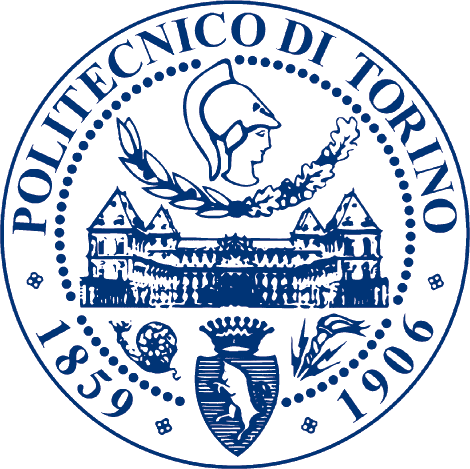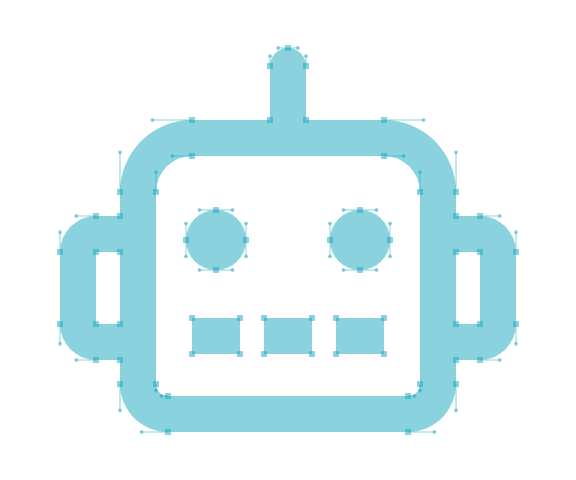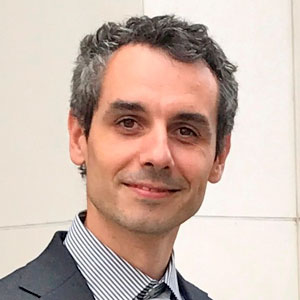Valerio Gower
- Fondazione Don Gnocchi
- https://www.dongnocchi.it/
Aggregazione e centralizzazione di dati provenienti da Robot Riabilitativi: l'esperienza della Fondazione Don Gnocchi
 Ingegnere Biomedico nato a Milano nel 1978. Dal gennaio 2005 lavora per la Fondazione Don Gnocchi. In particolare attualmente ricopre il ruolo di project manager in progetti di Health Technology Assessment e di traslazione di soluzioni innovative nella pratica clinica in presso la Direzione Sviluppo Innovazione. Precedentemente si è occupato, nella medesima organizzazione, di progetti nell'ambito delle Tecnologie Assistive a supporto delle persone con disabilità. E' stato coinvolto in svariati progetti di ricerca e innovazione finanziati dalla Commissione Europea
Ingegnere Biomedico nato a Milano nel 1978. Dal gennaio 2005 lavora per la Fondazione Don Gnocchi. In particolare attualmente ricopre il ruolo di project manager in progetti di Health Technology Assessment e di traslazione di soluzioni innovative nella pratica clinica in presso la Direzione Sviluppo Innovazione. Precedentemente si è occupato, nella medesima organizzazione, di progetti nell'ambito delle Tecnologie Assistive a supporto delle persone con disabilità. E' stato coinvolto in svariati progetti di ricerca e innovazione finanziati dalla Commissione Europea
 Biomedical Engineer, born in Milano in 1978. He has been working for Fondazione Don Gnocchi since 2005. He is currently working within the Development and Innovation department of Fondazione Don Gnocchi where he manage projects related to Health Technology Assessment and to the translation of innovative solutions into clinical practice. For eight years he worked as a researcher in the area of Assistive Technologies and innovative Home Care solutions in the same Foundation. He has been involved in several EU funded projects both as a researcher and project manager
Biomedical Engineer, born in Milano in 1978. He has been working for Fondazione Don Gnocchi since 2005. He is currently working within the Development and Innovation department of Fondazione Don Gnocchi where he manage projects related to Health Technology Assessment and to the translation of innovative solutions into clinical practice. For eight years he worked as a researcher in the area of Assistive Technologies and innovative Home Care solutions in the same Foundation. He has been involved in several EU funded projects both as a researcher and project manager
SESSIONE 4. Dati della ricerca: nuove opportunità e sfide
Aggregazione e centralizzazione di dati provenienti da Robot Riabilitativi: l'esperienza della Fondazione Don Gnocchi
 La Fondazione Don Gnocchi, con la sua rete di 28 centri in 9 regioni italiane, è una delle più grandi istituzioni private non profit nell'ambito della riabilitazione in Italia. FDG ha recentemente investito nelle tecnologie robotiche a supporto della riabilitazione installando più di 35 soluzioni robotiche in 10 dei suoi centri. Considerando il numero elevato di dispositivi installati, ciascuno dei quali produce in ogni seduta riabilitativa grosse quantità di dati, e tendo in conto il grande numero di accessi di pazienti nei centri di FDG (oltre 3 milioni all'anno), è facile immaginare le potenzialità dell'enorme mole di dati prodotta e la possibilità di creare tramite di essi una sorta di “bio-banca della riabilitazione”. Per lavorare al raggiungimento di questo obiettivo è stata creata un’architettura in grado di aggregare i dati provenienti dai diversi dispositivi tecnologici in un unico database centralizzato. L’obiettivo finale della centralizzazione dei dati strumentali della riabilitazione tecnologica è quello di fornire differenti tipologie di servizio ai diversi utenti interessati a vario titolo al monitoraggio dei dati registrati dai dispositivi tecnologici. In particolare sono stati individuate tre categorie di utenti: i manager, i clinici e i ricercatori. I manager sono interessati a controllare i volumi di utilizzo delle soluzioni tecnologiche, i clinici sono interessati a monitorare il percorso riabilitativo e l’outcome di pazienti specifici e i ricercatori sono interessati all’analisi dettagliata dei dati registrati dai dispositivi sulla base di protocollo specifici. Dalle soluzioni robotiche integrate nell'architettura sono stati fin qui raccolti i dati di oltre 47 mila trattamenti riabilitativi di oltre 2600 pazienti.
La Fondazione Don Gnocchi, con la sua rete di 28 centri in 9 regioni italiane, è una delle più grandi istituzioni private non profit nell'ambito della riabilitazione in Italia. FDG ha recentemente investito nelle tecnologie robotiche a supporto della riabilitazione installando più di 35 soluzioni robotiche in 10 dei suoi centri. Considerando il numero elevato di dispositivi installati, ciascuno dei quali produce in ogni seduta riabilitativa grosse quantità di dati, e tendo in conto il grande numero di accessi di pazienti nei centri di FDG (oltre 3 milioni all'anno), è facile immaginare le potenzialità dell'enorme mole di dati prodotta e la possibilità di creare tramite di essi una sorta di “bio-banca della riabilitazione”. Per lavorare al raggiungimento di questo obiettivo è stata creata un’architettura in grado di aggregare i dati provenienti dai diversi dispositivi tecnologici in un unico database centralizzato. L’obiettivo finale della centralizzazione dei dati strumentali della riabilitazione tecnologica è quello di fornire differenti tipologie di servizio ai diversi utenti interessati a vario titolo al monitoraggio dei dati registrati dai dispositivi tecnologici. In particolare sono stati individuate tre categorie di utenti: i manager, i clinici e i ricercatori. I manager sono interessati a controllare i volumi di utilizzo delle soluzioni tecnologiche, i clinici sono interessati a monitorare il percorso riabilitativo e l’outcome di pazienti specifici e i ricercatori sono interessati all’analisi dettagliata dei dati registrati dai dispositivi sulla base di protocollo specifici. Dalle soluzioni robotiche integrate nell'architettura sono stati fin qui raccolti i dati di oltre 47 mila trattamenti riabilitativi di oltre 2600 pazienti.
Aggregating and centralizing data of Robotic Rehabilitation devices: the experience of Fondazione Don Gnocchi
 ondazione Don Gnocchi (FDG), with its network 28 hospitals in 9 Italian regions, is one of the largest private not for profit organization in the field of rehabilitation in Italy. Recently FDG has been investing in advanced robotic rehabilitation systems which have been installed so far in 10 of its centres throughout Italy. In total 35 robotic devices have been deployed so far in 10 FDG centres. With such a large number of devices, each producing lots of data in every rehabilitation session performed by the patient, and considering that there are overall more than 3 million patients accessing the FDG centres each year, there was a great potential for the creation of an invaluable "rehabilitation bio-bank". In order to achieve such an aim, one of the main challenges from a technological point of view has been the creation of an architecture able to aggregate the data coming from the different devices into a centralized database. The starting point was indeed a set of 5 different kind of devices, installed in 10 different geographical locations, generating data in 3 different kind of formats, and each having their own database for patient personal data.
To address this challenging situation a specific architecture has been designed which includes 3 different layers of aggregation of the data generated by the robot: 1) "Data Acquisition Layer" responsible of retrieving the data from the devices and storing them into a local Network Access Storage; 2) "Data Formatting Layer" responsible of parsing the data of the different devices, transforming it into a common dataset, and store it in SQL format into a central database; 3) "Data Aggregation Layer" that analyze the patient personal data through a custom made algorithm able to "merge" patient records across the different devices.
The robotic solutions have been progressively deployed in the FDG centres starting from October 2015 . Since then more than 47'000 rehabilitation sessions of over 2600 patients have been recorded and stored into the central database. All the sensitive patient data are encrypted in the database using the AES algorithm.
Specific web based dashboards have been implemented for managers, clinicians and researchers that allow these stakeholder to access and analyze the data of their interest.
ondazione Don Gnocchi (FDG), with its network 28 hospitals in 9 Italian regions, is one of the largest private not for profit organization in the field of rehabilitation in Italy. Recently FDG has been investing in advanced robotic rehabilitation systems which have been installed so far in 10 of its centres throughout Italy. In total 35 robotic devices have been deployed so far in 10 FDG centres. With such a large number of devices, each producing lots of data in every rehabilitation session performed by the patient, and considering that there are overall more than 3 million patients accessing the FDG centres each year, there was a great potential for the creation of an invaluable "rehabilitation bio-bank". In order to achieve such an aim, one of the main challenges from a technological point of view has been the creation of an architecture able to aggregate the data coming from the different devices into a centralized database. The starting point was indeed a set of 5 different kind of devices, installed in 10 different geographical locations, generating data in 3 different kind of formats, and each having their own database for patient personal data.
To address this challenging situation a specific architecture has been designed which includes 3 different layers of aggregation of the data generated by the robot: 1) "Data Acquisition Layer" responsible of retrieving the data from the devices and storing them into a local Network Access Storage; 2) "Data Formatting Layer" responsible of parsing the data of the different devices, transforming it into a common dataset, and store it in SQL format into a central database; 3) "Data Aggregation Layer" that analyze the patient personal data through a custom made algorithm able to "merge" patient records across the different devices.
The robotic solutions have been progressively deployed in the FDG centres starting from October 2015 . Since then more than 47'000 rehabilitation sessions of over 2600 patients have been recorded and stored into the central database. All the sensitive patient data are encrypted in the database using the AES algorithm.
Specific web based dashboards have been implemented for managers, clinicians and researchers that allow these stakeholder to access and analyze the data of their interest.












